As I mentioned in my post last Friday, when I was looking back through pictures from the last week of September in my GBG365 archive, I found a surprising number of photos from different editions of the Gothenburg Book Fair. I hadn’t realised how frequent an attender I’d been. After three years away from town, it seemed like I really ought to go along to the Fair again this year. But, unlike in the four years immediately before Brussels, this year I had no particular reason. I wasn’t working with any exhibitors, I hadn’t published any books myself (again), I wasn’t teaching. But I had friends who would be there. So on Saturday morning I packed my camera and took myself off.
First impressions
My first impression was that the Fair was just as crowded as ever. As I stood with dozens of other people in a queue in the rain outside the conference centre, I wondered how long this would take. The queue did not seem to be moving.
But my first impressions were false. Pretty soon the line moved forward, and quickly, and I realised security was simply restricting the numbers of people in the reception area. Once I got into the building, it really didn’t take all that long to get to a cash desk. There I parted with SEK 190.
Am I just out of touch or is this price even more exorbitant than it used to be? It always seemed to be very expensive even three years ago. (To be fair, I just converted SEK 190 into euros, pounds and dollars: €18, £17, $21. About the price of a paperback book. Maybe it’s not so very expensive after all.)
The trouble last year
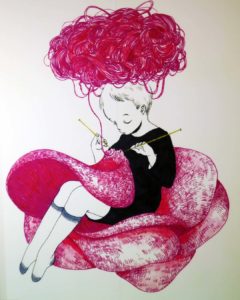
Saturday always used to be the day when most people would visit the Fair. It was always the day that was most crowded, noisiest, most full of energy, yes, but also most tiring. Well, it’s not quite like that any more. Yes, it was busy, but not nearly as busy as I had expected. And yes, it was noisy, but not quite as exhausting as I remember.
I understand that part of the problem may be traced back to last year’s conflicts over the exclusion of certain extremist right-wing publishers. A Nazi organisation paraded in the street outside, an anti-Nazi protest crowd gathered and the police struggled to keep them apart. Apparently the Book Fair security staff were forced to lock the doors for a period. (They deny this, but several people I know who were there witnessed it.)
Anyway, last year’s attendance was apparently at rock bottom on the Saturday and it doesn’t seem like it’s fully recovered yet. And at SEK 190 for the day it is going to be a while before they get their crowds back, I guess. (I just checked some statistics – the most previous time I was at the Fair, in 2014, it had 97,000 visitors. Last year there were only 77,000. This year numbers were up, but only to 85,000.)
The Three Hats
Once I got inside, my first destination was Kim M. Kimselius’ stall. Kim is a friend, a very prolific children’s author, and one of the administrators of the Blogg52 group on Facebook. It was nice to see her again and see her interacting with her fans, signing books and talking. Kim tells me that after 20 years – her first Book Fair was in 1998 – this year will be her last. Financially it’s no longer worth it, though she plans to offer fans the chance to visit her at home next summer.
Soon after I got to Kim’s stall, I met Lennart Guldbrandsson and then my old friend Kristina Svensson turned up. Kim, Lennart and Kristina are The Three Hats (Trehattar). So far they’ve written three books – tips for authors and would-be authors (in Swedish). We left Kim’s stall in the capable hands of her husband Jan and their helpers and took ourselves off for a joint lunch.
After lunch, Lennart had to rush off and Kim to return to her duties, so Kristina and I went for a quieter chat and a cup of coffee outside the Book Fair area.
After that Kristina decided to head home and do some writing while I went back into the Fair. (This may be why she has published 5+ books since I first met her in 2008, while I haven’t yet published one.)
Author hunting at the 2018 Gothenburg Book Fair
Back in the Fair, I took out the camera again and wandered around hunting authors. I found John Ajvide Lindqvist in an interview on one of the open stages. Lindqvist is the author internationally most well known for the vampire film based on his first novel Let the Right One In (Låt den rätte komma in). He is also the author of Border (Gräns) about a modern day troll who works as a very successful Swedish Customs Officer. The film is based on one of Lindqvist’s short stories and is the official Swedish submission for the “Best Foreign Language Film” category of the next Academy Awards.
Just around the corner from him I found Jonas Hassen Khemiri. Khemiri is the author of Manticore, one of the Swedish books I read earlier in the year. And I’ve just learned (from the English Wikipedia) that his Allt jag inte minns (Everything I Don’t Remember) which won the August Prize, “has been translated into more than 25 languages. Joyce Carol Oates chose it as one of her three favourite books of 2016 … [and] Masha Gessen picked it as her favourite book of 2017”. He was at the Book Fair to promote his latest novel Pappaklausulen (literally The Daddy Clause – it’s not yet been translated).
Perhaps I should say that the acoustics on the stages of the main exhibition hall were as bad as ever. In both cases I was too far away from either writer to hear more than the occasional snatch. I learned that Lindqvist used to be a magician, but I wasn’t able to pick up anything coherent of Khemiri’s interview.
Tea Book Sketches
Now it was time to meet up with another face from my past, Martin Lindeskog, blogger, podcaster and “indie biz philosopher”. Martin has just self-published his first book Tea Book Sketches, which I bought a copy of in part to learn how to use the Swish mobile payment system. This is something the Swedish banks introduced while I was living abroad. There’s been no reason to use it, but now I’m back home I knew I was going to have to download the app and learn how. Buying Martin’s book seemed like a good opportunity. It went remarkably smoothly, so now I am Swish enabled.
I was meeting up with Martin so I could get the copy I’d Swished him money for.
We had a long chat about the process of bringing the book to market. The very attractive illustrations (by American illustrator John Cox) the layout and the quality of the printing. The book is available as print-on-demand from Amazon, but Martin has paid for a limited edition of 100 locally printed copies for his crowdfunder patrons, the Swedish copyright libraries – and the odd purchaser like me.
At about 4 pm I decided it was time for me to go home. Although the crowds at the Fair were not as great or as noisy as I remember them (especially from the year I was at the Fair for the full five days, assisting on the Egenutgivernas‘ (Swedish indie authors’) stall, it was still getting to me. I made my way out and took myself off.
I’m also publishing this article for the #Blogg52 challenge.

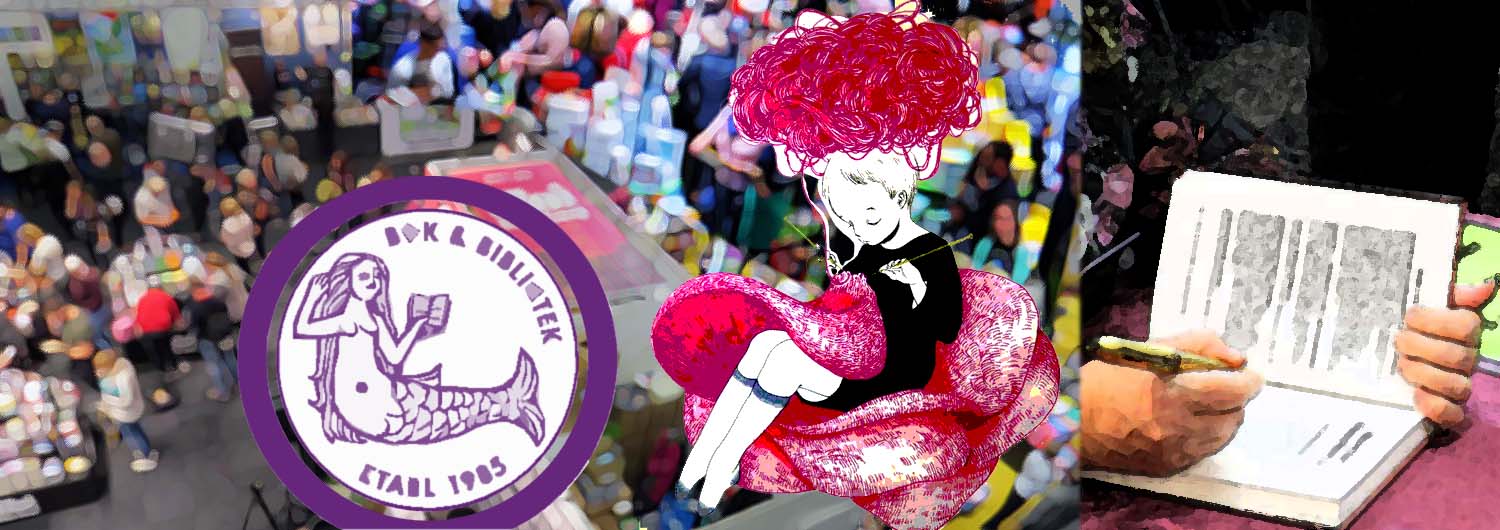
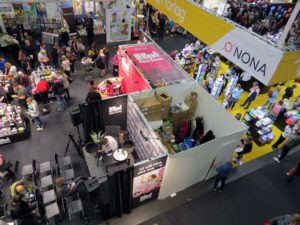
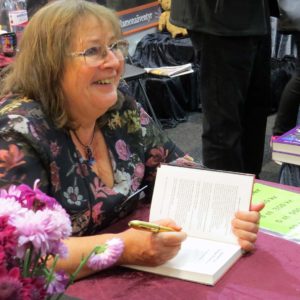

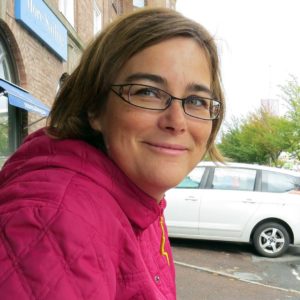
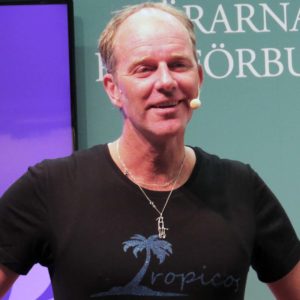


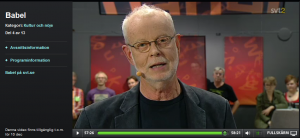
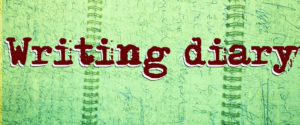

Wish I had been there but reading about your experiences makes up for part of which I lost. Is it really lesss noicy and crowded? Sounds good!
Kram
Eva
Hi Eva,
I’m glad you got some vicarious pleasure from my report.
Yes, it did really did feel a bit less noisy and crowded from what I remember. Not much but some. Though as you read the acoustics are as bad as ever so the sound still spreads out into the space and adds to the general hubbub. The one time I was there all five days (including helping to set up on the Tuesday), I was completely exhausted and didn’t want to be in crowds or listen to loud music for at least a week after. How Kim has managed to cope, going back year after year I don’t know. She must be tougher than she looks!
😉
Maybe you’ll come and see for yourself next year.
John
Jättekul att läsa, även så här långt efter bokmässan. Fina bilder du har tagit på oss.
Kram Kim 🙂
Tack Kim. Glad du tyckte om bilderna också!